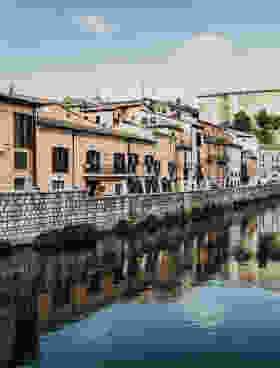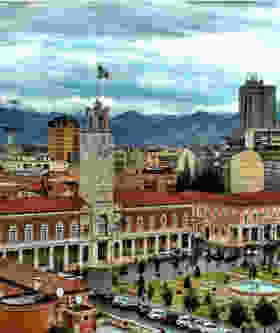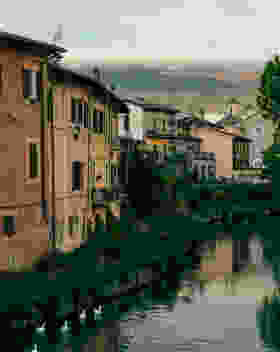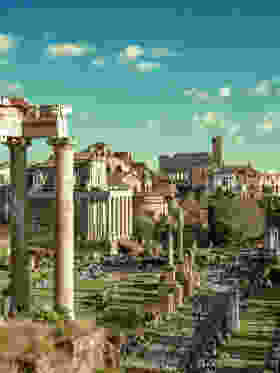Overview

The larger Viterbo metropolitan area comprises 60 towns (comuni) and covers an area of 361.524 km2.
The population density is 88 inhabitants per km2, making it sparcely populated.
The male to female ratio is 1.00:1.05.
Viterbo is a city of 68,000 people (2017) in Lazio, a central region of Italy.
As a settlement Viterbo dates back to Etruscan times.
Between around 1100 and 1300, it was one of the most important cities in Europe.
By the 13th century it had 50 castles under its control. It was the place where Popes took refuge when driven out of Rome and for several decades was the seat of the Papacy.
It was the scene of battles between potential invaders of Rome and papal armies.
With the departure of the Papacy to Orvieto and then to Avignon Viterbo declined in importance.
It was further hit by Black Death, which killed two-thirds of its population and a major earthquake in 1349.
In the 20th century it was damaged by appalling Fascist-era town planning and then by Allied bombs.
These days its population is about the same as it was in the 13th century, at around 60,000.
Apart from its tradition its main claim to fame now is that Italy’s gold reserves are held there.
Search for:
Climate
The province of Viterbo receives on average 249 hours of sunshine per month, or 8.3 hours of sunshine per day.NaN This is 5.51% more than the average for Italy and 0.24% less than the average for the region of Lazio.Throughout the year, it rains on average 7.3 days per month, which is an ordinary amount of precipitation for an Italian province.
During the autumn and winter season, there are usually 1.34 days per month with fog and 1.31 cold days per month with perceived temperatures below 3°C.
In the summer, there are on average 21.15 hot days per month with perceived temperatures above 30°C.
Weather Now
name Region.NameCost of Living
The average monthly income in Viterbo is around 1375.48€, which is lower than the average for Italy.The estimated cost of living is around 1422.17€ per month for an individual or 2130.43€ per month for a family of 4.
The cost for renting a small apartment (2-3 bedrooms) in a main city area is around 1238.04€ per month.
Overall, Viterbo is affordable compared to other Italian provinces.
Living in Viterbo is around 13.81% cheaper than the average of all Italian provinces.
Quality of Life
Healthcare
Healthcare in Viterbo is below average. For every 10k inhabitants, there are around undefined pharmacies, 8.57 general practitioners and 21.4 specialized doctors per 10k inhabitants.NaNAverage life expectancy in Viterbo is 82 years of age.
Education
Viterbo has a higher-than-average percentage of high school graduates, around 63.4%; and a higher-than-average percentage of university graduates, around 29.2%.NaN The average number of completed years of schooling for people over 25 is 10.66, which is not far from the national average of 10.44.NaN There is one university in the province.
Leisure
Viterbo, a charming medieval city, has a vibrant and lively nightlife that combines its rich historical atmosphere with modern entertainment.The city features a selection of bars, wine cellars, and clubs where visitors can enjoy a diverse range of experiences.
Viterbo's nightlife scene offers a mix of traditional wine tastings, live music performances, and a bustling atmosphere in its picturesque streets and squares.
Visitors can immerse themselves in the city's unique blend of history and contemporary entertainment.
Overall, Viterbo has pretty good nightlife with 3.23 bars and 4 restaurants per 10k inhabitants.
Crime and Safety
The province of Viterbo is overall very safe for expats.As of 2021, there are an average of 2525.8 reported crimes per 100k inhabitants.
This is 10.93% lower than the national average.
There have been around 1.2 deadly road accidents and 10.8 serious work-related injuries per 10k people in Viterbo.
This is respectively 122.22% more driving accidents than average and 16.28% less work accidents than average.
Car theft is reportedly 71.30% lower than average with only 20.24 cases per 100k inhabitants.
NaNReports of house thefts are 4.21% lower than average with 167.65 cases per 100k inhabitants.
NaNCases of robbery are uncommon with 167.65 reported cases per 100k inhabitants, about 41.42% less the national average.
Viterbo offers a safe and secure experience with a low crime rate.
Incidents of petty theft and pickpocketing are rare but can occur in crowded tourist areas.
The town benefits from a peaceful atmosphere and has a reliable police presence.
Road accidents are relatively uncommon, but it is still important to drive responsibly and follow traffic regulations.
Transport
Public transport in Viterbo is lacking, and traffic is very high.NaNThere are on average 0.77 active vehicles per person, against a national average of 0.66.
Around 0.03km per 10k inhabitants of the main city in Viterbo consist of bicycle lanes.
This makes Viterbo not very bike-friendly.
The historical centre is small enough to be visited on foot.
For longer distances you can use the local bus network, hosted by Francigena, the government company of transport in Viterbo (ordinary 90-min ticket for €0.70; ordinary 90-min ticket on board for €1.50; daily ticket for €1.55).
Tickets can be found at tobacconists, and must be validated when getting on the bus.
Discover
Recommended Tours in Lazio
Provinces Nearby



